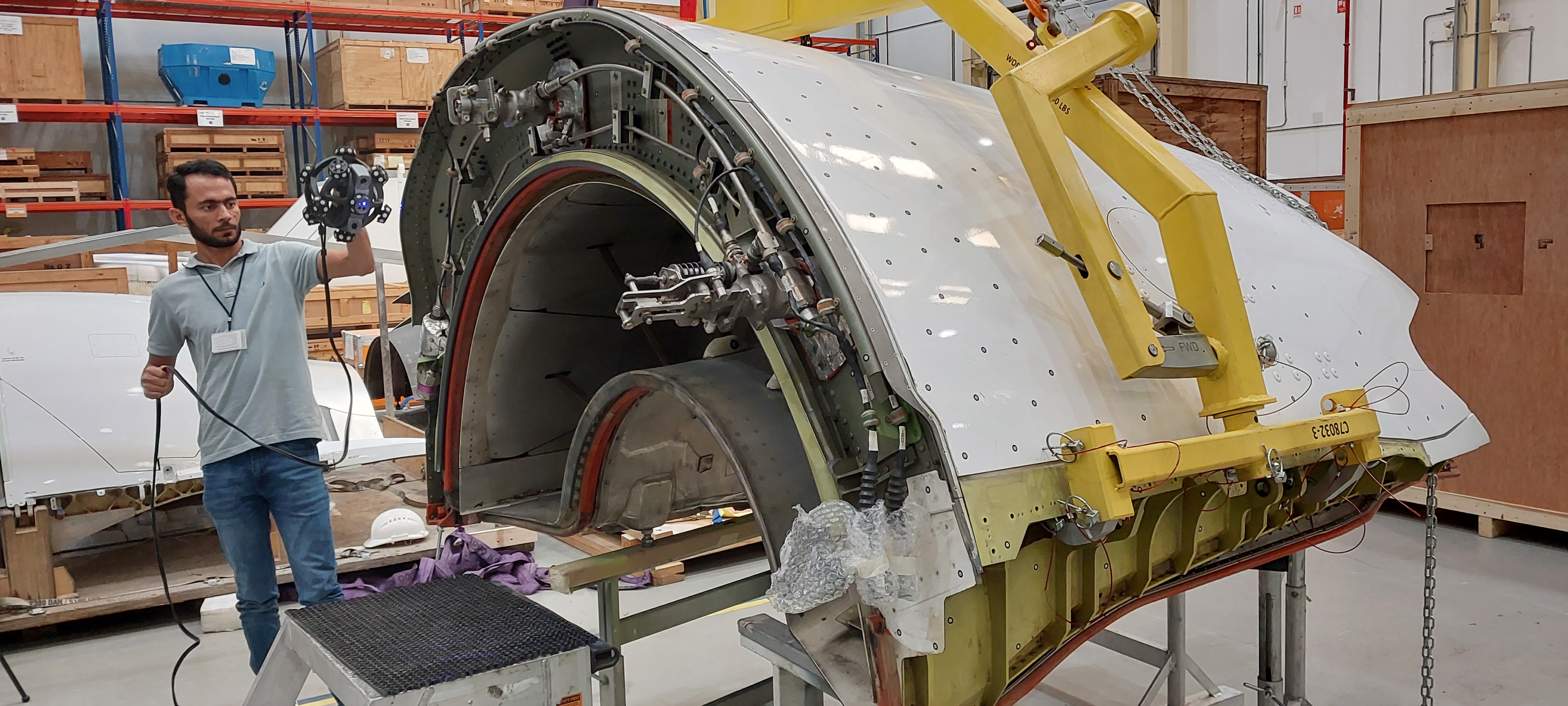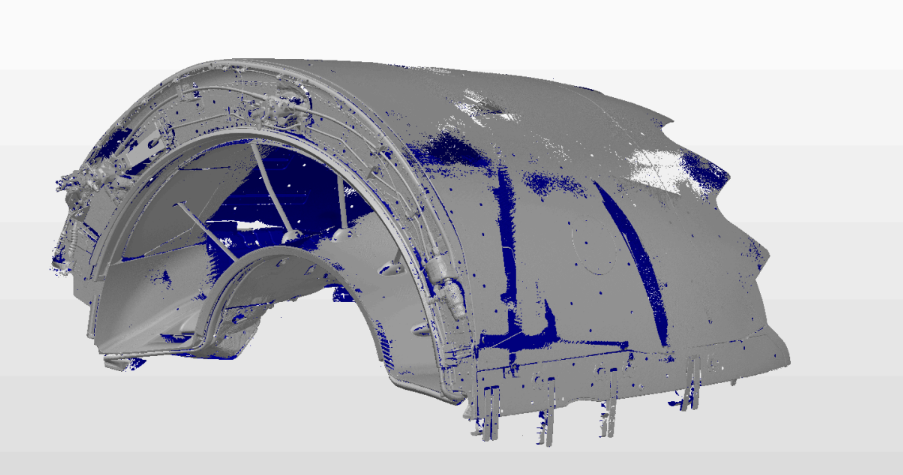
Lufthansa Technik faced challenges repairing an aircraft reverse thruster, requiring a custom fixture. Traditional measurement methods risked inaccuracies, potentially damaging the component and causing delays. 3D scanning technology was employed to capture precise dimensions, creating a digital twin. This solution ensured a perfect fixture fit, avoided costly rework, streamlined the repair process, and enhanced overall repair quality.

Lufthansa Technik, a leading global provider of Maintenance, Repair, and Overhaul (MRO) services for the aviation industry, needed to repair an aircraft reverse thruster. This complex, intricate, and large component required a custom-built fixture to hold it securely and accurately during the repair process.
The critical challenge was designing a fixture that would perfectly match the thruster's exact mounting points and geometry. Traditional measurement methods posed a significant risk of inaccuracies, which could lead to misplacement of the thruster, potential damage to the component, and costly delays and rework.

To ensure the required precision, our expert 3D scanning services were commissioned to create a digital twin of the thruster. Our technicians used advanced, non-contact 3D scanning equipment directly at the MRO facility to capture the exact dimensions and surface details of the component.
The primary focus was on accurately mapping the critical mounting points and overall shape needed for the fixture interface. This process allowed for rapid data acquisition without causing stress to the component, resulting in a comprehensive and highly accurate digital model of the thruster.


%20(1).jpg)

The high-fidelity 3D scan data gave Lufthansa Technik's engineering team the precise, reliable measurements they needed to design and manufacture the custom repair fixture with confidence.
This approach delivered several key benefits:
Guaranteed Fit: The fixture was designed using exact data, which ensured a perfect fit and securely held the reverse thruster throughout the repair process.
Avoided Costly Rework: The risk of fixture misalignment and the subsequent need for expensive modifications and delays were completely eliminated by avoiding measurement inaccuracies.
Streamlined Workflow: Access to accurate digital data streamlined the fixture's design and manufacturing, leading to a more efficient overall repair timeline for the aircraft component.
Enhanced Repair Quality: A precise fixture ensures the component is held correctly, which supports higher quality and more reliable repair outcomes.
Our 3D scanning solution provided the foundational accuracy needed for Lufthansa Technik to create essential tooling, which directly contributed to the efficiency and reliability of their critical MRO operations.
